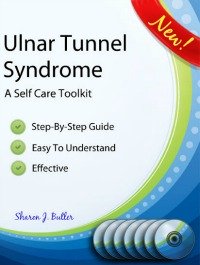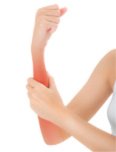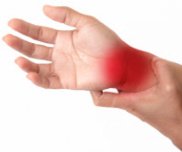Ulnar Tunnel Syndrome
Ulnar Tunnel Syndrome, also known as Cubital Tunnel, is a condition where the ulnar nerve becomes trapped or stuck as it passes through the notch of bone at the elbow. The ulnar nerve brings feeling and sensation to the outer part of the forearm and to the ring and little fingers. If you feel numbness or tingling in these areas, chances are you have a problem with your ulnar nerve.
Where Is The Ulnar Tunnel?
If you feel the large bony point that most people recognize as their elbow, you will notice that close to that point is a second, smaller bony point. The space between the two points is the ulnar tunnel. It is a channel through which the ulnar nerve slides as it travels down the arm.
What Causes Ulnar Tunnel Syndrome?
As the ulnar nerve passes through the ulnar tunnel, it is surrounded by a fluid filled sheath of connective tissue that protects it from unusual rubbing and irritation. Every time you bend your elbow for any reason, your ulnar nerve will slide through that bony channel. The problems arise when conditions surrounding the nerve get dry, irritated, or stuck, preventing the normal smooth gliding motion of the nerve.
Imagine a brake cable in a car. The wire cable travels through a tube so that when you apply the brake, the cable moves and sends the brake signal to the brake pads. If a kink develops in the cable or in the tube that surrounds it, the cable can get hung up, keeping it from functioning properly.
The same sort of thing happens in Ulnar Tunnel Syndrome. For whatever reason, the ulnar nerve gets "hung up" as it passes through the ulnar tunnel. It no longer slides and glides along its pathway. Instead, it gets irritated because it is being tugged and cannot move. As a means of protection, additional fiber builds up in the tunnel itself, further trapping the nerve while at the same time, protecting it from further damage.
"Dear Sharon,
Two months ago I was diagnosed with cubital tunnel syndrome in both of my elbows. A little over a month ago I ordered your program for ulnar nerve syndrome and I have used it with great success. Thank you so much for your program... it has given me renewed confidence that I can get through this without surgery. The symptoms have largely subsided."
Warm regards,
Will McCants, Princeton, NJ
How Do Symptoms Develop?
The ulnar nerve can become stuck, adhered or compromised at any point along its pathway. Understanding where the nerve begins and ends can provide clues to where this might be happening. See the Ulnar Tunnel Syndrome Anatomy section to learn more about the pathway of the ulnar nerve.
Poor posture and bad ergonomics can significantly contribute to the formation of problems with the ulnar nerve. Any stress along the entire pathway of the ulnar nerve can be instrumental in the development of symptoms so reducing sources of stress that exacerbate symptoms can be especially helpful in any recovery program.
The most important aspect of any recovery program will be appropriate self care . When you have a clear plan to encourage healing and avoid stress to the injured area, then real recovery can begin.
Click the block below that most closely matches your injury for more information and to find the Toolkit we offer to help you in your recovery.








